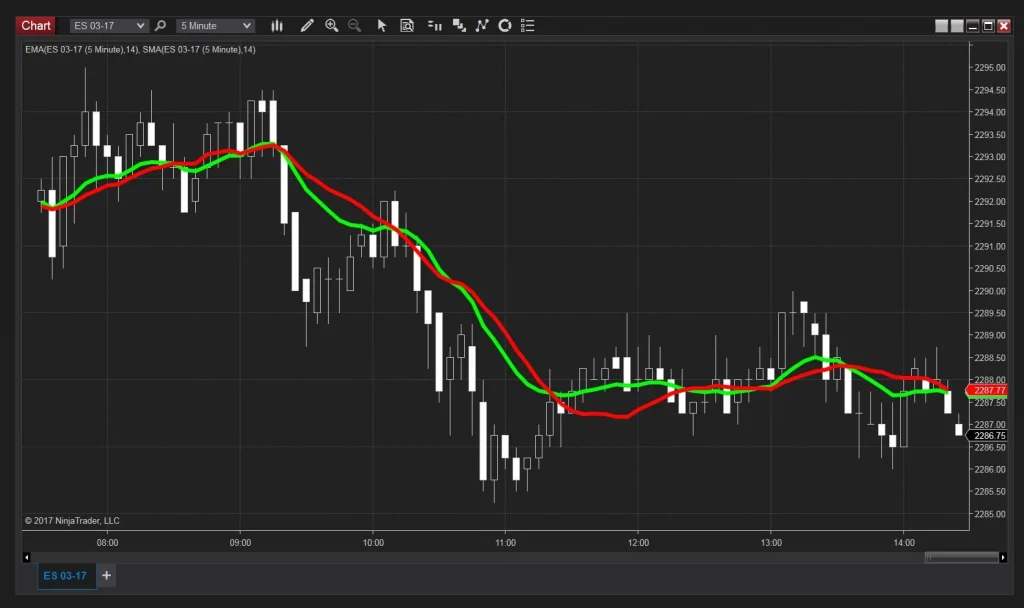In forex trading, understanding and identifying market trends is key to successful trading. One of the most essential tools traders use to spot trends and make informed decisions is the moving average (MA). A moving average smooths out price data over a specific period, which helps traders identify the overall direction of the market. In this article, we’ll explore how to use moving averages to identify trends and how they can be incorporated into your trading strategy.
What Are Moving Averages?
A moving average (MA) is a technical indicator used to smooth out price action over a specific period, eliminating the noise from short-term fluctuations. There are two common types of moving averages: the Simple Moving Average (SMA) and the Exponential Moving Average (EMA).
- Simple Moving Average (SMA): The SMA is calculated by taking the average of a currency pair’s closing prices over a specific period. For example, a 50-period SMA calculates the average closing price of the last 50 periods.
- Exponential Moving Average (EMA): The EMA places more weight on the most recent prices, making it more responsive to new market information. As a result, the EMA reacts more quickly to price changes, which can be beneficial for identifying short-term trends.
How Moving Averages Help Identify Trends

Moving averages are invaluable tools for identifying the overall direction of the market. Here’s how they can help traders:
1. Identifying the Direction of the Trend
- Uptrend: When the price is above the moving average, it typically indicates an uptrend. If the moving average is also sloping upwards, it confirms that the market is in a bullish trend. Traders may consider buying during such periods.
- Downtrend: When the price is below the moving average, it generally suggests a downtrend. A downward slope of the moving average further supports a bearish market. In such cases, traders may look for shorting opportunities.
- Sideways/Consolidating Market: If the price is moving close to the moving average without a clear upward or downward trend, it may indicate a consolidation phase, where the market is neither in an uptrend nor downtrend.
Using Moving Averages to Spot Trend Reversals
Moving averages can also be helpful in spotting potential trend reversals. Here’s how you can use them for that purpose:
2. Golden Cross and Death Cross
- Golden Cross: This occurs when a short-term moving average (e.g., 50-period MA) crosses above a long-term moving average (e.g., 200-period MA). The Golden Cross is a strong signal of a potential bullish trend reversal. Traders often view it as a signal to enter long positions.
- Death Cross: The opposite of the Golden Cross, this happens when the short-term moving average crosses below the long-term moving average, indicating a potential bearish reversal. Traders may consider this as a signal to enter short positions.
3. Moving Average Crossovers
In addition to the Golden Cross and Death Cross, crossovers between moving averages can also indicate changes in trend direction. For example, a crossover between the 10-period and 50-period moving averages can provide a shorter-term signal of a trend reversal.
Best Practices for Using Moving Averages in Forex Trading

While moving averages are essential in identifying trends, they work best when combined with other technical indicators and tools. Here are some best practices to consider:
4. Use Multiple Moving Averages
By using a combination of short-term and long-term moving averages, traders can gain more insight into market trends. For instance, a common strategy is to use both the 50-period and 200-period moving averages. A crossover between these two MAs can provide clearer signals of market direction.
5. Combine with Other Indicators
To increase the reliability of moving average signals, consider using them alongside other technical indicators like the Relative Strength Index (RSI) or Moving Average Convergence Divergence (MACD). For example, when a moving average crossover aligns with an overbought or oversold signal from the RSI, it can help confirm the strength of the trend.
6. Adjust for Market Conditions
The performance of moving averages can vary depending on the market’s volatility. In choppy or sideways markets, moving averages may produce false signals, so it’s essential to adjust your strategy according to market conditions. In trending markets, moving averages tend to work more effectively in providing trend-following signals.
Moving averages are essential tools for forex traders looking to identify market trends. By using moving averages, traders can recognize the direction of trends, spot potential reversals, and refine their entry and exit points. Combining moving averages with other indicators and using multiple time frames can provide a more comprehensive analysis of the market.
For more resources and trading strategies, visit IamForexTrader.



